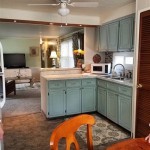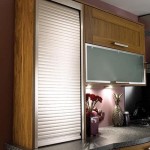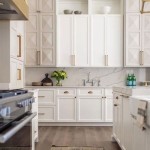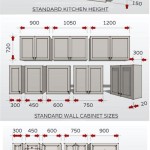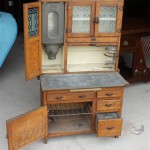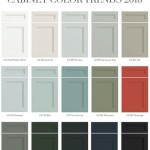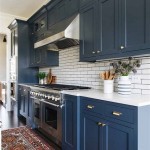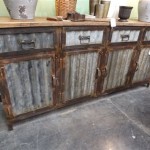LED Kitchen Cabinet Lighting Strips: A Comprehensive Guide
LED kitchen cabinet lighting strips have revolutionized how homeowners illuminate their kitchens. These versatile and energy-efficient lighting solutions provide focused illumination for countertops, shelves, and interior spaces, enhancing both functionality and aesthetics. Understanding the various aspects of LED strip lighting is crucial for making informed decisions about selection, installation, and maintenance.
The appeal of LED strips lies in their flexibility and adaptability. They can be easily cut to size, conforming to the specific dimensions of the intended application. The adhesive backing on most strips facilitates simple installation without the need for complex wiring or professional assistance in many cases. The low profile of the strips allows them to be discreetly mounted, minimizing visual intrusion while maximizing light output. Furthermore, the energy efficiency of LEDs translates to reduced electricity consumption and lower utility bills compared to traditional lighting options.
Different types of LED strip lights cater to varying needs and preferences. Single-color strips provide consistent illumination in a chosen hue, while color-changing RGB strips offer a dynamic range of color options. Adjustable-white strips allow users to fine-tune the color temperature, from warm and inviting to cool and bright. In addition, the density of LEDs on the strip impacts the light output and uniformity, with higher density strips generally producing a smoother, more consistent glow.
Understanding the Benefits of LED Strip Lighting
One of the primary advantages of LED strip lighting is its energy efficiency. LEDs convert a significant portion of electricity into light, with minimal energy wasted as heat. This efficiency translates to lower operating costs and reduced environmental impact. Compared to incandescent bulbs or halogen lights, LEDs consume considerably less power while providing comparable or superior illumination.
LEDs also boast a long lifespan, often rated for tens of thousands of hours of use. This longevity reduces the frequency of bulb replacements, saving time and money. The extended lifespan also makes LEDs a more sustainable lighting option, contributing to waste reduction. The initial investment in LED strip lighting is often offset by the long-term cost savings associated with energy efficiency and reduced maintenance.
Another benefit of LED strip lighting is its versatility in application. The strips can be used for a wide range of purposes, including under-cabinet lighting, accent lighting, and task lighting. They can be installed in kitchens, bathrooms, living rooms, and other areas where focused or decorative illumination is desired. The flexibility of the strips allows them to be easily adapted to different spaces and design aesthetics.
The ability to control the brightness and color of LED strip lighting adds another layer of versatility. Many LED strip lighting systems are compatible with dimmers, allowing users to adjust the light output to suit their needs. Color-changing RGB strips and adjustable-white strips offer even greater control over the lighting atmosphere, enabling users to create customized lighting effects.
Key Considerations When Selecting LED Strip Lighting
Choosing the right LED strip lighting requires careful consideration of several factors. The brightness of the strips is a crucial consideration, as it determines the amount of light produced. Brightness is typically measured in lumens, with higher lumen ratings indicating brighter light output. The appropriate brightness level will depend on the specific application and the desired level of illumination. For under-cabinet lighting, a moderate brightness level is often sufficient, while task lighting may require brighter illumination.
The color temperature of the LED strip lighting is another important factor to consider. Color temperature is measured in Kelvin (K), with lower Kelvin values indicating warmer, more yellow light, and higher Kelvin values indicating cooler, more blue light. The choice of color temperature will depend on personal preference and the desired lighting atmosphere. Warm white light (around 2700K-3000K) is often preferred for creating a cozy and inviting ambiance, while cool white light (around 4000K-5000K) is often used for task lighting and areas where bright, focused illumination is needed.
The voltage and power requirements of the LED strip lighting are also important considerations. LED strips typically operate on low voltage, such as 12V or 24V. A power supply or transformer is needed to convert the standard household voltage (120V or 240V) to the required low voltage. It is important to select a power supply that is compatible with the LED strips and that provides sufficient power to operate them. Overloading the power supply can damage the LED strips or create a fire hazard.
Another key factor is the IP (Ingress Protection) rating of the LED strip lighting. The IP rating indicates the level of protection against dust and water. For applications in damp or wet environments, such as kitchens and bathrooms, it is important to choose LED strip lighting with a suitable IP rating. An IP rating of IP65 or higher provides adequate protection against water splashes and humidity.
The quality of the LED strip lighting is also important to consider. High-quality LED strips are typically more durable, energy-efficient, and long-lasting. Look for LED strips that are manufactured by reputable brands and that have undergone rigorous testing. Check for certifications such as UL (Underwriters Laboratories) or ETL (Electrical Testing Laboratories) to ensure that the LED strips meet safety standards.
Installation and Maintenance of LED Strip Lighting
The installation of LED strip lighting is generally straightforward, but it is important to follow the manufacturer's instructions carefully. Before starting the installation, ensure that the power is turned off to the circuit that will be used to power the LED strip lighting. Clean the surface where the LED strips will be installed to ensure proper adhesion. The adhesive backing on the strips can be used to attach them to the surface. For longer runs of LED strip lighting, it may be necessary to use additional mounting clips or brackets to provide extra support.
Cutting the LED strips to size is a common practice when installing them. Most LED strips have designated cut points that are marked with scissors icons or dotted lines. Use sharp scissors or a utility knife to cut the strips at these designated points. Avoid cutting the strips in between the designated cut points, as this can damage the LED circuits. After cutting the strips, it may be necessary to use connectors to join them together. Various types of connectors are available, including solderless connectors and wire connectors.
Connecting the LED strips to the power supply or transformer is another important step in the installation process. Ensure that the polarity of the LED strips and the power supply is correct. The positive (+) and negative (-) terminals on the LED strips must be connected to the corresponding terminals on the power supply. Incorrect polarity can damage the LED strips. If using a dimmer, connect the dimmer between the power supply and the LED strips.
Regular maintenance of LED strip lighting is minimal. Periodically clean the strips with a soft, dry cloth to remove dust and debris. Avoid using harsh chemicals or abrasive cleaners, as these can damage the strips. Check the connections and wiring periodically to ensure that they are secure and in good condition. If any of the LEDs on the strip fail, it is typically necessary to replace the entire strip. However, with their long lifespan, LED strip lighting typically requires very little maintenance over its lifetime.
Proper ventilation is crucial to the longevity of LED strip lighting, especially when enclosed within cabinets. Heat buildup can shorten the lifespan of LEDs, so ensuring adequate airflow around the strips is essential. Overcrowding the strips or placing them in tightly sealed compartments should be avoided. If heat is a concern, consider using aluminum profiles to dissipate heat and extend the lifespan of the LEDs.
The versatility of LED strip lighting extends to their controllability. Many systems can be integrated with smart home technology, allowing for remote control via smartphones, voice assistants, or automated schedules. This integration provides convenience and enhances energy efficiency by allowing users to easily adjust lighting levels based on their needs and preferences.
Under Cabinet Lighting
Under Cabinet Lighting With Led Strip Lights And Light Bars

Exposed Led Tape Vs Professionally Designed Under Cabinet Lighting

How To Choose And Install Led Strip Lights For Kitchen Cabinets

Kitchen Cabinet Lighting Using Warm White Led Strip Lights

The Ultimate Guide To Choosing Best Led Strip Lights For Your Home Simple Lighting Blog

Commercial Electric 12 In Led Linkable Rgbw Flexible Under Cabinet Light Kit 4 Strip Pack 423100 The Home Depot

Exposed Led Tape Vs Professionally Designed Under Cabinet Lighting

Strip Lighting Vs Puck Which Is Better For Undercabinet

Utilitech 96 In Plug Led Under Cabinet Strip Light The Lights Department At Com
Related Posts

